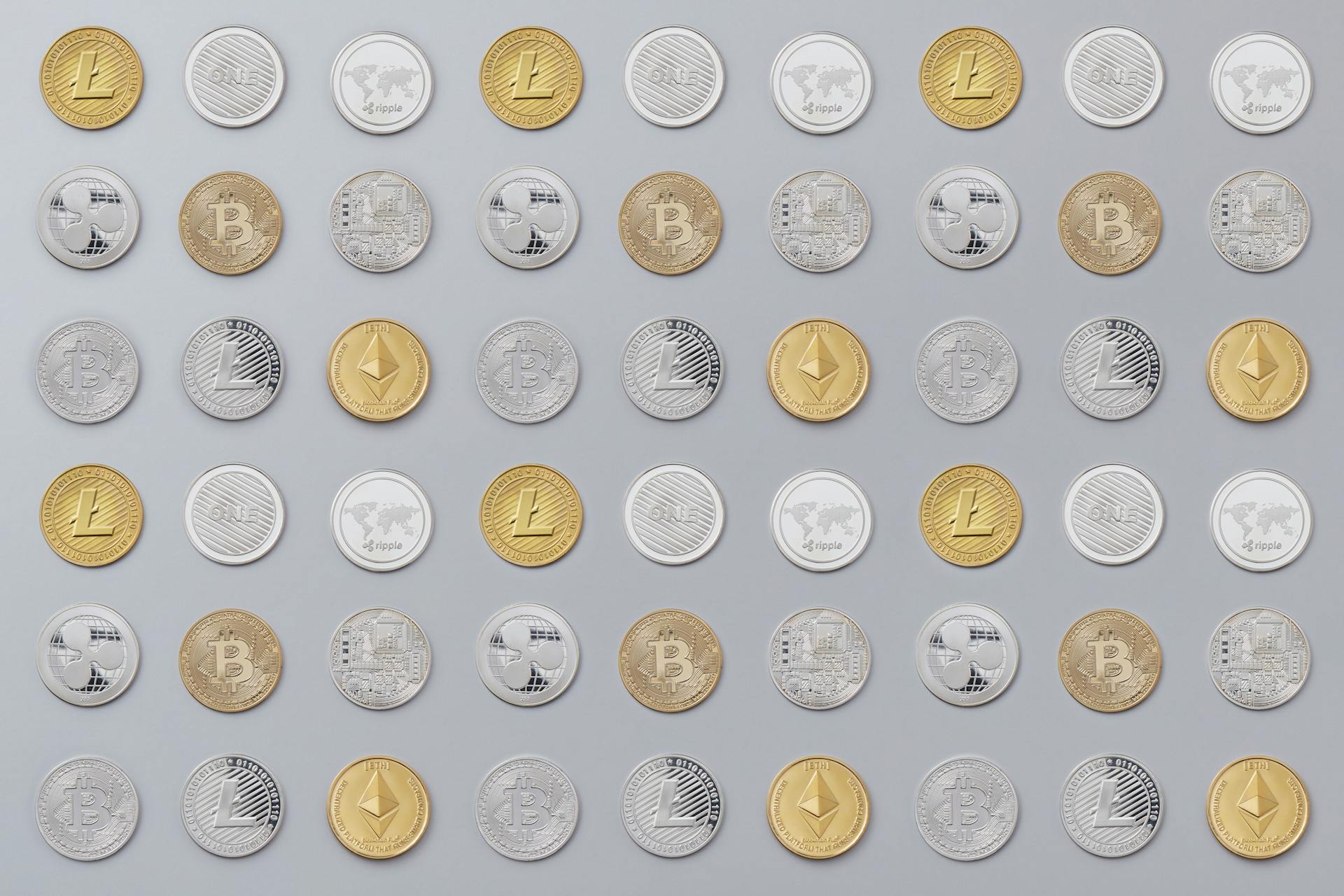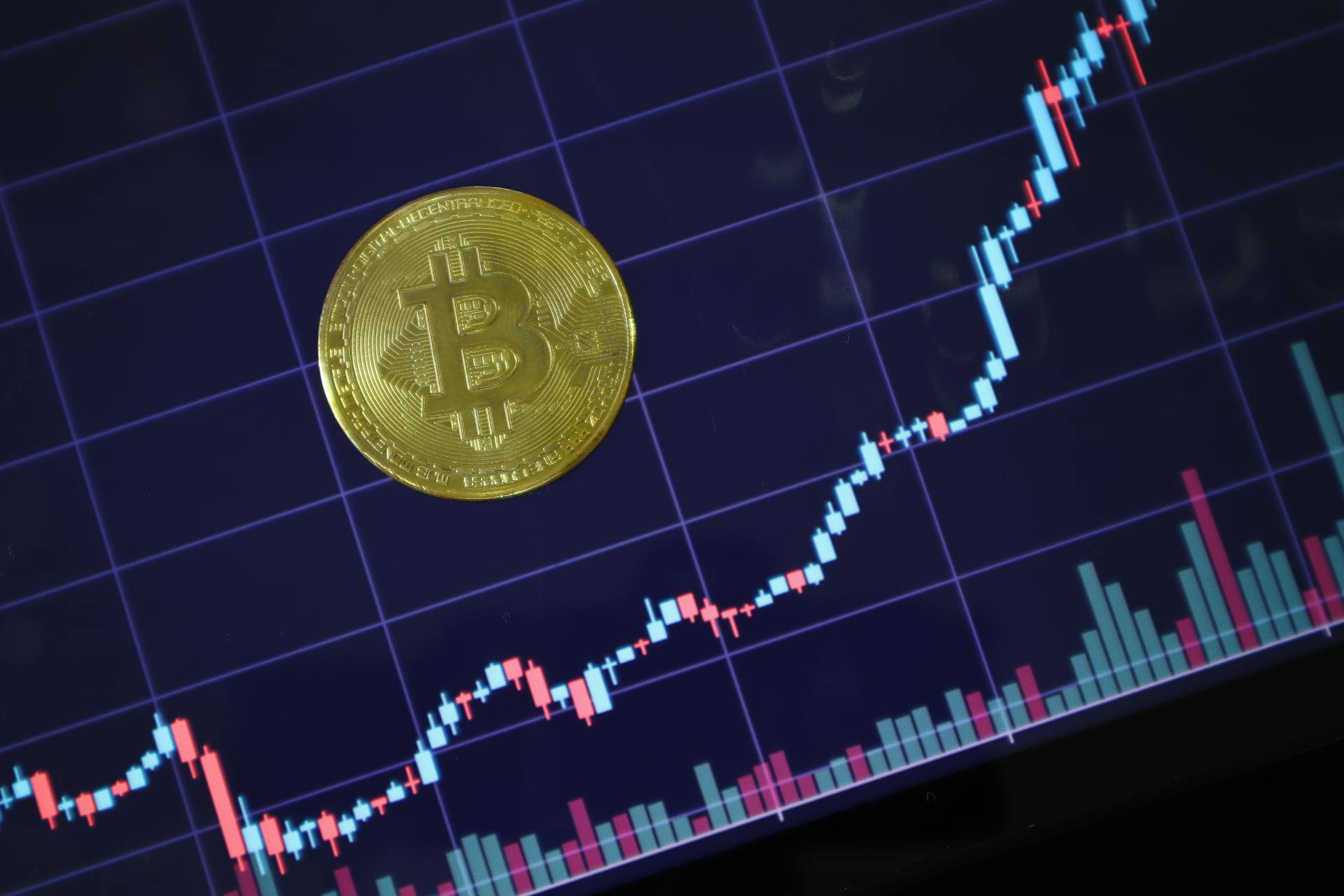
Polkadot is an open-source blockchain platform that allows for the creation of custom blockchains and interoperability between different blockchain networks. It was founded in 2016 by Dr. Gavin Wood, a co-founder of Ethereum.
Polkadot's native cryptocurrency is called DOT, and it's used for various purposes such as staking, voting, and paying transaction fees. The total supply of DOT is capped at 1 billion.
Polkadot's unique relay chain enables interoperability between different blockchain networks, allowing for the transfer of assets and data between them. This is made possible through the use of a custom-built protocol called the Polkadot protocol.
Polkadot's architecture is designed to be highly scalable and secure, with a focus on enabling the creation of a decentralized web. The platform has gained significant attention and adoption in the blockchain space.
What is Polkadot?
Polkadot is a blockchain project that focuses on creating a platform for other blockchain-based projects and applications to build on.
It's designed to improve the fundamental technology that powers decentralized applications (dApps). Polkadot is an open-source sharded multichain protocol that connects and secures a network of specialized blockchains.
This allows blockchains to be interoperable with each other, facilitating cross-chain transfer of any data or asset types, not just tokens. Polkadot provides a foundation for a decentralized internet of blockchains, also known as Web3.
As a layer-0 metaprotocol, Polkadot underlies and describes a format for a network of layer 1 blockchains known as parachains (parallel chains). Polkadot's native DOT token serves three clear purposes: staking for operations and security, facilitating network governance, and bonding tokens to connect parachains.
Here are the main components of the Polkadot network:
- Relay Chain: Polkadot's "heart", helping to create consensus, interoperability and shared security across the network of different chains;
- Parachains: independent chains that can have their own tokens and be optimized for specific use cases;
- Parathreads: similar to parachains but with flexible connectivity based on an economical pay-as-you-go model;
- Bridges: allow parachains and parathreads to connect and communicate with external blockchains like Ethereum.
History and Development
Polkadot was started by Peter Czaban and Ethereum co-founder Gavin Wood, who is also credited with coining the term Web3 in 2014.
Gavin Wood published the white paper for Polkadot in 2016.
The Web3 Foundation was launched in 2017 by Wood and Czaban, with the goal of developing the Polkadot protocol.
The foundation raised over $200 million by selling DOT tokens, which is the native cryptocurrency of Polkadot.
As of this writing, Polkadot was ranked 16th by market capitalization, with a market cap of $6.319 billion.
Polkadot has a 24-hour trading volume of $163.62 million, indicating a significant amount of activity in the market.
There are 1.49 billion tokens circulating, and 880.81 million of them are staked, showing a strong level of community engagement with the protocol.
You might enjoy: Foreign Currency Exchange News
Key Concepts
Polkadot uses the nominated proof-of-stake (PoS) consensus algorithm, which is a more energy-efficient alternative to traditional proof-of-work (PoW) algorithms.
The protocol's bridges allow different blockchain networks to interact with each other, enabling a more interconnected and decentralized ecosystem.
Polkadot has a unique sharded multichain network architecture, which enables parallel processing of many transactions on several chains in parallel ("parachains").
This parallel processing power improves scalability, making Polkadot a more efficient and effective blockchain platform.
Here are some key features of Polkadot's architecture:
Polkadot's user-driven governance system allows all token holders to have a vote in how the network is run, ensuring a high degree of decentralization and community involvement.
The network also features a sophisticated system of nominators, validators, and collators, which work together to secure and maintain the network.
Token and Economy
The DOT token has three main uses: staking, governance, and bonding. Staking DOT incentivizes network participants to act honestly by holding DOT as collateral for good behavior, and rewards are issued to those who stake their DOT.
DOT holders have the right to participate in voting through referenda, a voting scheme weighted by stake. This allows them to have a say in the direction of the Polkadot platform.
Because of the limited number of parachain slots available, they are leased in bulk coretime reservations. DOT is used to reserve coretime in one-month increments.
The economic effect of Polkadot's technology upgrades is expected to boost the DOT token's price in the long run. This is due to a limited supply of DOT tokens on the market, combined with rising demand for their use.
As the Polkadot platform prepares for wider adoption, the available token supply actually decreases over time due to a small fraction of core time payments being burned. This is an example of reverse inflation, also known as deflation.
The Agile Coretime update has made it easier for parachain developers to purchase parachain slots in bulk, and sell off parts of their coretime. This has lowered the barriers of entry and allowed for more participation.
Here's a quick summary of the three main uses of the DOT token:
- Staking: to incentivize good behavior
- Governance: to participate in voting through referenda
- Bonding: to reserve coretime in one-month increments
Investment and Price
Polkadot's price has been on a rollercoaster ride, but it's currently trading at $7.72 USD, up 0.20% in the last 24 hours. This is a significant increase from its recent dip, and it's a good sign for investors.
The 200-day Moving Average (MA) is a key indicator that Polkadot has been holding above at $5.3, which is a strong bullish signal. This suggests that the price is showing long-term strength as buyers gain control.
Polkadot's price is also holding firmly above the $5.6 demand level, which was a crucial support level during June and July. If it manages to hold steady above this level in the coming days, a move toward new supply zones is likely, with the next target at approximately $6.5.
You can purchase wrapped DOT on exchanges such as Binance, Coinbase, Kraken, and Gemini, but it's not available on popular decentralized exchanges like SushiSwap or UniSwap.
Here's a rough estimate of Polkadot's market performance in the last 24 hours:
The circulating supply of Polkadot is 1,535,598,041 DOT coins, and the max supply is not available. This is an important metric to keep an eye on, as it can impact the price and overall market performance of the cryptocurrency.
If you're considering investing in Polkadot, it's essential to do your own research and not just follow the crowd. As the article states, "it depends on your outlook for the project and its cryptocurrency."
News and Updates
Polkadot's price may wake up in 2025 as a rare chart pattern forms. This is according to recent news, which is a promising sign for investors.
Polkadot's logo is set to feature on Lionel Messi's jersey with Inter Miami partnership. This is a high-profile marketing move that could increase the cryptocurrency's visibility.
Polkadot's price prediction for 2024 and beyond is looking positive, with some experts saying it has more upside. This is good news for those who have invested in the cryptocurrency.
Treasury Reserves at Record Low

Polkadot's Treasury Reserves have hit an all-time low. This is a significant concern for the platform's future.
Polkadot is ranked among the top 20 blockchains, known for its focus on blockchain interoperability. This innovative approach aims to connect different blockchain networks.
The low Treasury Reserves are a major red flag for investors and users alike. It's essential to keep a close eye on this development to understand its full implications.
Polkadot's position in the top 20 blockchains is a testament to its growing popularity and potential. However, the current state of its Treasury Reserves is a cause for caution.
Latest News
Polkadot's price may wake up in 2025 as a rare chart pattern forms, giving investors reason to be optimistic about the future.
AI Companions, AGLD, and Acala prices have risen as Bitcoin dropped below $93k, showing that Polkadot's ecosystem is still thriving despite market fluctuations.
Kusama has soared over 110% as a "canary" in the crypto space, indicating that Polkadot's parachains are performing well.

Dune is expanding its onchain analytics to cover 50+ Polkadot parachains, providing valuable insights for investors and developers alike.
Polkadot's logo will feature on Lionel Messi's jersey as part of an Inter Miami partnership, further increasing the project's visibility and reach.
The Polkadot price prediction for 2024 and beyond is looking promising, with experts suggesting that the price has more upside.
SubQuery Network has introduced the first decentralized RPCs for Polkadot and Kusama, enhancing the security and scalability of the networks.
Polkadot's Gavin Wood introduced a new JAM chain graypaper at Token2049, showcasing the project's ongoing innovation and development.
Coinbase is adding futures for Polkadot, Internet Computer, and NEAR, making it easier for investors to get involved in the Polkadot ecosystem.
Astar Network has gained 26% in 7 days following a partnership with Polkadot and Polygon, demonstrating the potential for collaboration and growth in the space.
Ethereum Consolidation Continues
Ethereum has been consolidating, and charts signal a potential breakout. Breaking the 200-day MA is a significant indicator of upward momentum.
Reclaiming a significant demand level demonstrates Ethereum's potential to maintain its current upward trajectory. This suggests that Ethereum is likely to continue climbing in the coming weeks.
For now, all eyes remain on Ethereum's ability to consolidate above $5.6. This will be a key indicator of whether Ethereum can continue its upward climb.
Consider reading: Ethereum Nieuws
About
I'm excited to share with you the story behind our news and updates. Our team is made up of experienced journalists who have a passion for delivering accurate and timely information.
We strive to provide a platform for our readers to stay informed about the latest developments in various fields. Our content is carefully curated to ensure that it's engaging, informative, and easy to understand.
Our team is dedicated to delivering high-quality content that meets the highest standards of journalism. We're committed to providing our readers with the information they need to make informed decisions.
We're constantly updating our content to reflect the latest news and trends. Our team is always on the lookout for new and interesting stories to share with our readers.
We believe that knowledge is power, and we're committed to empowering our readers with the information they need to succeed.
Frequently Asked Questions
Will a dot reach $1000 dollars?
Reaching a $1000 valuation for one DOT is theoretically possible, but it would require the market capitalization of DOT to reach at least $1.4 trillion. This is a significant milestone that would likely have a substantial impact on the Polkadot ecosystem.
What will Polkadot be worth in 2025?
According to a 2025 projection, Polkadot (DOT) is expected to range between $5.91 and $23.45, with a key indicator at $14.04. Reaching this level in February 2025 could unlock significant upward movement.
Sources
- https://www.investopedia.com/polkadot-definition-6362436
- https://crypto.news/tag/polkadot/
- https://www.newsbtc.com/news/polkadot-dot/polkadot-holds-key-demand-level-dot-could-hit-11-in-coming-weeks/
- https://coinmarketcap.com/currencies/polkadot-new/
- https://www.fool.com/investing/2024/09/22/why-new-updates-make-polkadot-a-top-crypto/
Featured Images: pexels.com

